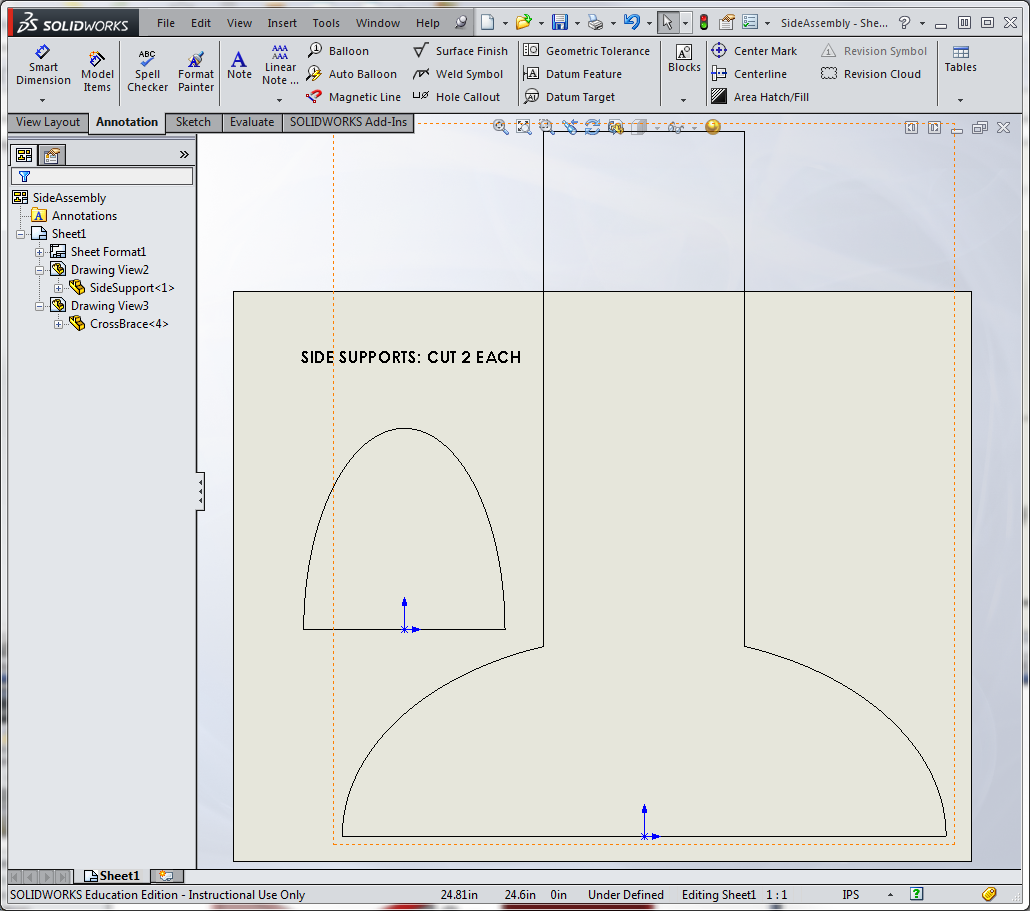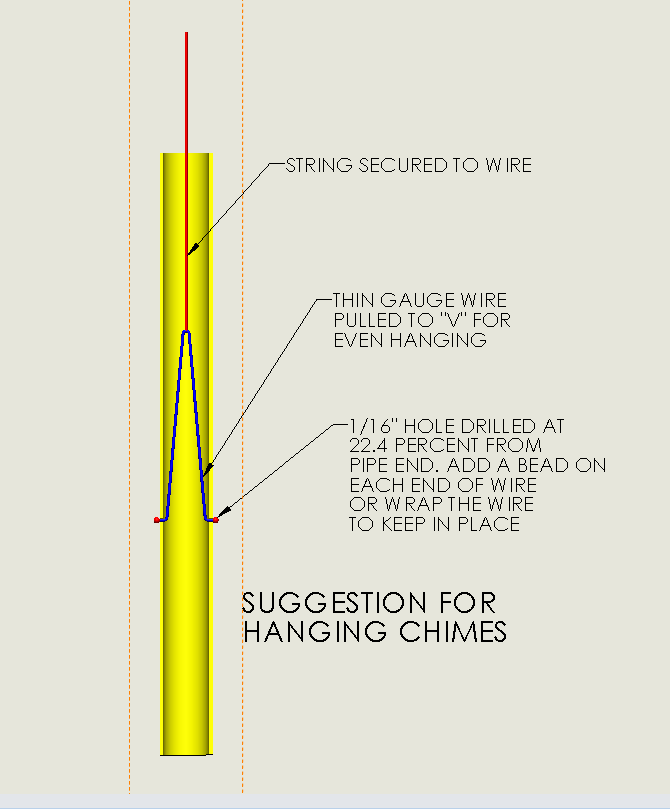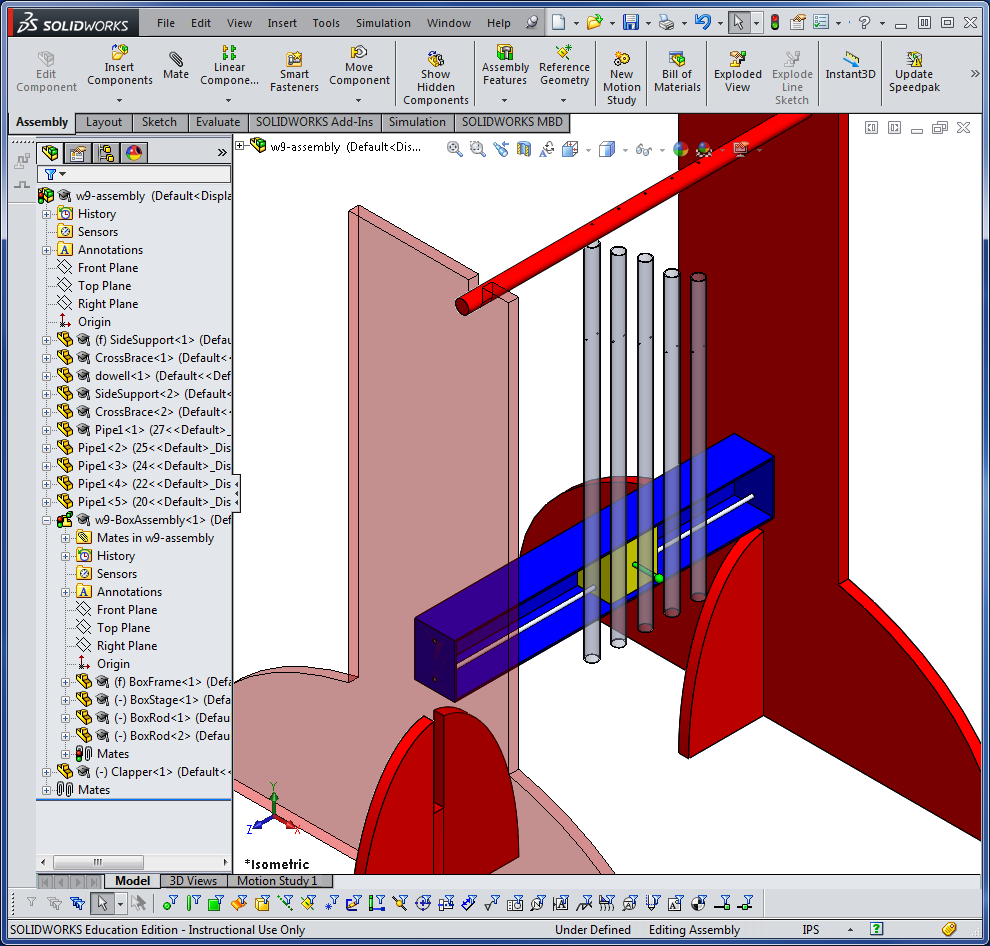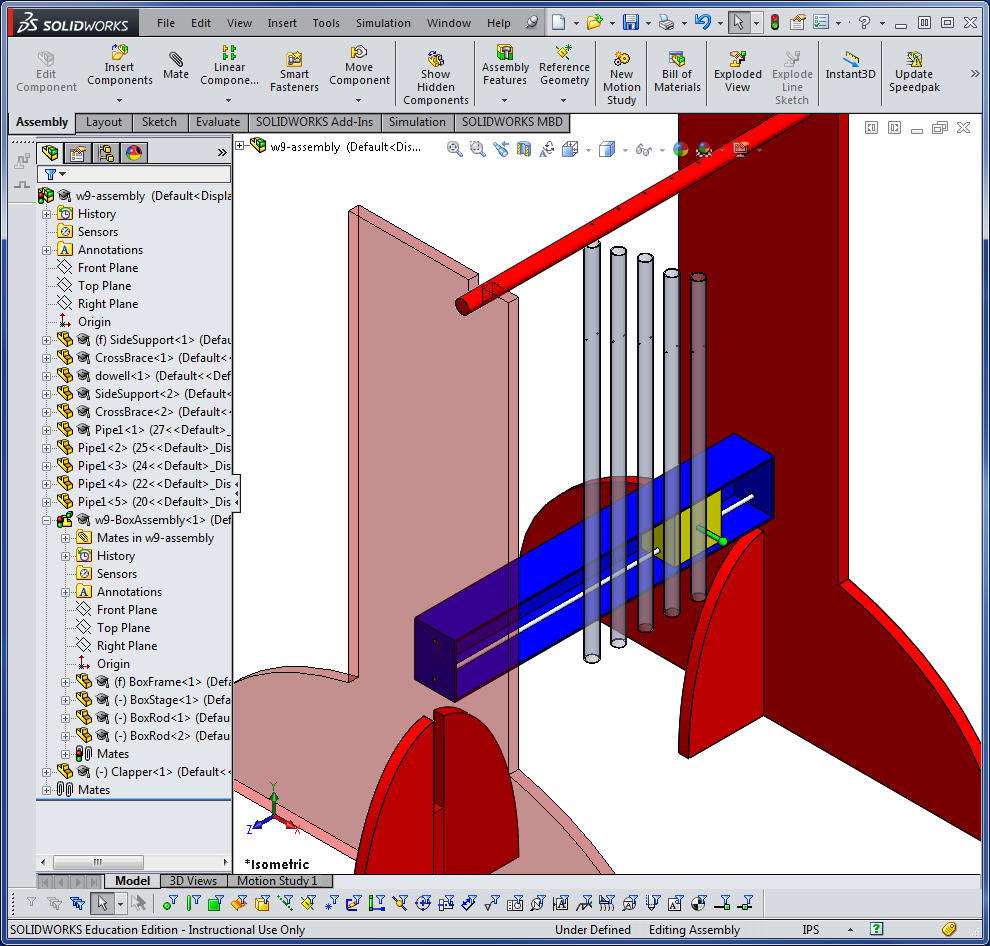Major pentatonic scale uses the first, the major second, major third, major fifth, and major sixth tone of a scale. For example: the major C scale contains the notes C, D, E, F, G, A, B, and C. The notes in the C manjor pentatonic will be C, D, E, G, and A. The first note will be the longest piece of pipe and then increment from there. The calculation below shows the longest piese of pipe that should be cut therefore maximizing the total length of 120-inches of pipe.
Calculation to maximize the use of a 10-foot piece of 3/4" conduit.
120 = 1.0000x + 0.9428x + 0.8944x + 0.8165x + 0.7746x
120 = 4.4283x
27.1 = x
Begin with the longest pipe measuring 27 inches. The tuner says that this tone is an A-flat, but it needs to be ground a bit for the exact frequency. That will not be attempted for this revision of this machine.
The notes for this pentatonic scale should be close to A-flat, B-flat, C, E-flat and F
The chart below was taken from the referenced web site above on Wind Chimes to determine length of pipe to be cut. The Unison pipe length was cut at 27 inches in length (see calculation above). i then cut the lengths required for a Major 2nd, Major 3rd, Fifth, and Major 6th to get the major pentatonic scale. The pipes are supported from a wire inserted through a 1/16 inch hole drilled through the pipe at the distance of 22.4% from the end of the pipe. This 22.4% is at one of the two nodes of the pipe where there is no vibration. The wire is secured so as to not pull through the hole and is long enough to form a "V" in the wire so the pipe hangs as vertically as possible. See the drawing of the pipes below for the exact measurements.
| Interval | Ratio to Fundamental Just Scale |
Multiply Longest Chime Length by |
|---|---|---|
| Unison | 1.0000 | 1.0000 |
| Minor Second | 25/24 = 1.0417 | 0.9798 |
| Major Second | 9/8 = 1.1250 | 0.9428 |
| Minor Third | 6/5 = 1.2000 | 0.9129 |
| Major Third | 5/4 = 1.2500 | 0.8944 |
| Fourth | 4/3 = 1.3333 | 0.8660 |
| Diminished Fifth | 45/32 = 1.4063 | 0.8433 |
| Fifth | 3/2 = 1.5000 | 0.8165 |
| Minor Sixth | 8/5 = 1.6000 | 0.7906 |
| Major Sixth | 5/3 = 1.6667 | 0.7746 |
| Minor Seventh | 9/5 = 1.8000 | 0.7454 |
| Major Seventh | 15/8 = 1.8750 | 0.7303 |
| Octave | 2.0000 | 0.7071 |


Above files to cut: Sent the side supports to be cut on the Shopbot. Since I was not sure of the thickness of material, I could not determine a slot size. That was left up to Tim.
Chime Assembly: The image below shows a suggestion to hang the chimes as vertically as possible.

Preliminary Design: The three images below show the preliminary design with the movement of the stepper motor as it hits the pipes, producing the pentatonic sounds of the chimes. The final design that was used looks a bit different than this preliminary design. We had a bit of a problem getting the pipes to chime because of the slow movement of the stepper motor.


